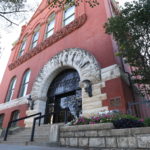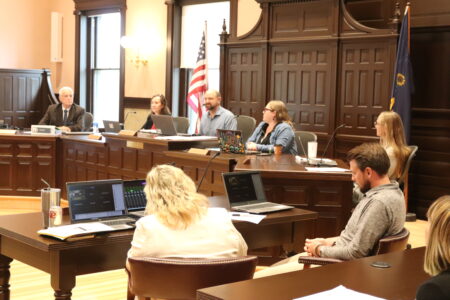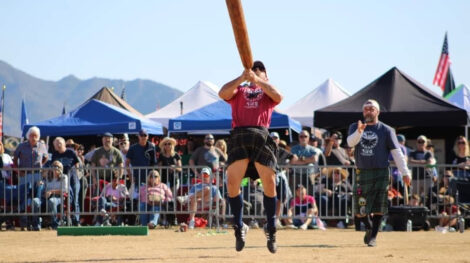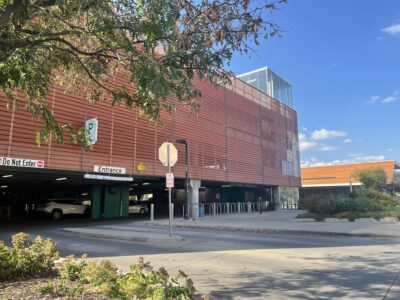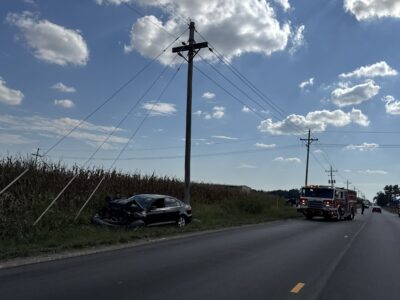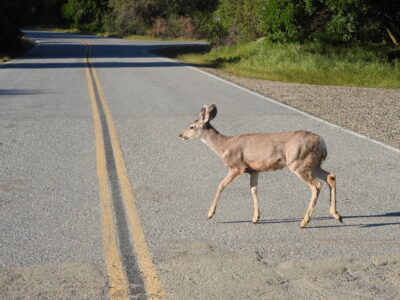Douglas County officially lays out the scope of three significant conservation projects a part of its Open Space Plan; here’s what to expect going into 2025

photo by: Josie Heimsoth/Journal-World
Construction equipment at Lone Star Lake Park on Friday, November 22, 2024.
A nearly $3 million countywide effort to conserve open spaces and to promote access to nature is starting to show results, with some of the first becoming visible at the county-owned Lone Star State Park.
Work is underway at Lone Star — a state park featuring a 185-acre lake located about 30 minutes southwest of Lawrence — with construction beginning on a new kayak launch facility.
Lone Star improvements, though, are just part of what the county hopes to accomplish with its open space plan. The plan focuses on three areas — current park improvements and enhancements, programmatic support for private land conservation and conservation of the Wakarusa River Corridor. In 2022, commissioners allocated $2.78 million in American Rescue Plan Act funding to help with these initiatives.
In addition to the Lone Star Lake projects, the county plans to partner with the Kansas Land Trust to conserve several natural areas, and create a plan that will consider several aspects of the Wakarusa River Corridor and how to manage it for future generations.
County leaders and partners gave the Journal-World an update on the timelines for these projects and a breakdown of their costs. Here’s a look:
Improvements to Lone Star Lake Park
Lone Star Lake Park – the focus area of the park improvements and enhancements part of the Open Space plan – offers several benefits to residents in Douglas County, including wildlife habitat, trails, fishing and swimming, campgrounds, community space and historical preservation.
At the park, the Open Space team plans to replace shelters, a swim dock, a boat ramp, picnic tables and campground fire rings. Additionally, the plan suggests installing a new fishing dock, an ADA-accessible kayak launch and grading and road improvements, as the Journal-World reported.

photo by: Josie Heimsoth/Journal-World
A picnic table area at Lone Star Lake Park on Friday, November 22, 2024.
These improvements are scheduled to begin at the end of 2024, with completion anticipated in 2025. A proposed budget of $600,000 has been allocated for the current county parks focus area.
Public Works Director Chad Voigt told the Journal-World via email that materials for the new docks at the swim beach and boat ramp have been ordered. The installation is expected to take place in the spring, once winter weather has passed. Additionally, Public Works has ordered new fire rings and picnic tables and the installation will depend on the weather.
For the ADA-accessible kayak launch, the fabricated floating equipment has been ordered and will be manufactured this winter. Public Works has completed the site plan and design for the new walkway and pier, while county crews have started construction on the concrete foundation of the pier. The new launch is expected to open in the spring, weather permitting.
Finally, for an East Point Shelter replacement project, Public Works has begun the preliminary design work to determine size and parking plans. They anticipate finalizing a plan along with cost estimates and a schedule in 2025.
Conservation easements with the Kansas Land Trust
Open Space leaders have partnered with the Kansas Land Trust to create two new conservation easement projects. The easements – legal documents that landowners can voluntarily use to place restrictions on how their property will be used or developed in the future – can create restrictions that last even after a property has been sold to a new owner.
The Kansas Land Trust is budgeted to receive $25,000 from the county for communication and outreach efforts related to raising awareness about voluntary land conservation programs. Additionally, the organization is set to receive $225,000 from the county to help implement with landowners a pair of conservation easement projects that provide a public benefit and exemplify the vision and criteria outlined in Douglas County’s Open Space Plan.
Kaitlin Stanley, executive director of the Kansas Land Trust, told the Journal-World in an email that there aren’t any specific ecosystems in mind for conservation, and that they are excited to see what projects come in from across Douglas County.
The Kansas Land Trust website will host materials related to this partnership, known as the Land Protection Program. Stanley estimates that application materials for their easements will be available no later than the first week of December. It is important to note that any eligible project must have significant public benefit.
“I am delighted to enter this partnership because community-centered conservation is at the core of the Kansas Land Trust’s recently completed strategic conservation plan, which will guide KLT’s future work,” Stanley said in an email to the Journal-World.
The team at the Kansas Land Trust will evaluate the applications and its board of directors will determine which applications receive matching funds. The applications will be due February 28, 2025.
A plan to conserve the Wakarusa River Corridor
From Clinton Lake Dam to Eudora, Open Space leaders will focus on the conservation of the Wakarusa River Corridor by developing the Corridor Vision Plan, which will analyze the historical context of the area and future flooding risks, water demands, nutrient flows, habitats and more to develop a program that will guide decisions over the coming years.
The team will work with the environmental consulting firm Biohabitats Inc. to develop the plan to study the landscape’s hydrology, ecology and the needs and resilience of the community that uses it.
The total cost for this project is $249,500, leaving a balance of $1.6 million to support the ongoing progress and implementation of Open Space plan priorities. The project is expected to span around 10 months, with the final draft and summary document for the Corridor Vision Plan slated for completion by August 2025.
The work plan is divided into four phases. The first phase establishes a kickoff event to confirm goals, data and guidance on the engagement plan, which will be developed by the end of 2024.

photo by: Screenshot
A project timetable for the plan to conserve the Wakarusa River Corridor as a part of the Open Space Plan.
The second phase will evaluate the existing conditions of the river corridor, taking into account the documented data on hydrology, water quality, fauna, etc. and the team will gather data themselves to map the corridor’s conditions. This phase is anticipated to take the most amount of time, lasting five months from December to April.
The Open Space team will travel to the site being looked at in phase three sometime in the late spring to participate in a three-day workshop, including visioning exercises, field work, listening meetings, and ideation to support the development of a vision for the Wakarusa River corridor. There will also be a draft of initial corridor plan diagrams and imagery. This phase would last around three months from May to July.
The final phase involves writing the corridor plan and action steps for the County and partners to move projects forward. The team will draft a report, gather feedback from county staff, and revise it to include corridor and action planning, as well as a policy and ordinance review, developed with input from county staff and the project team. This report will guide policy and decision-making for the county and its partners, and is expected to be completed by August next year.
Editor’s Note: This article was changed to correct the amount of money set aside for communication and outreach of land conservation programs.


